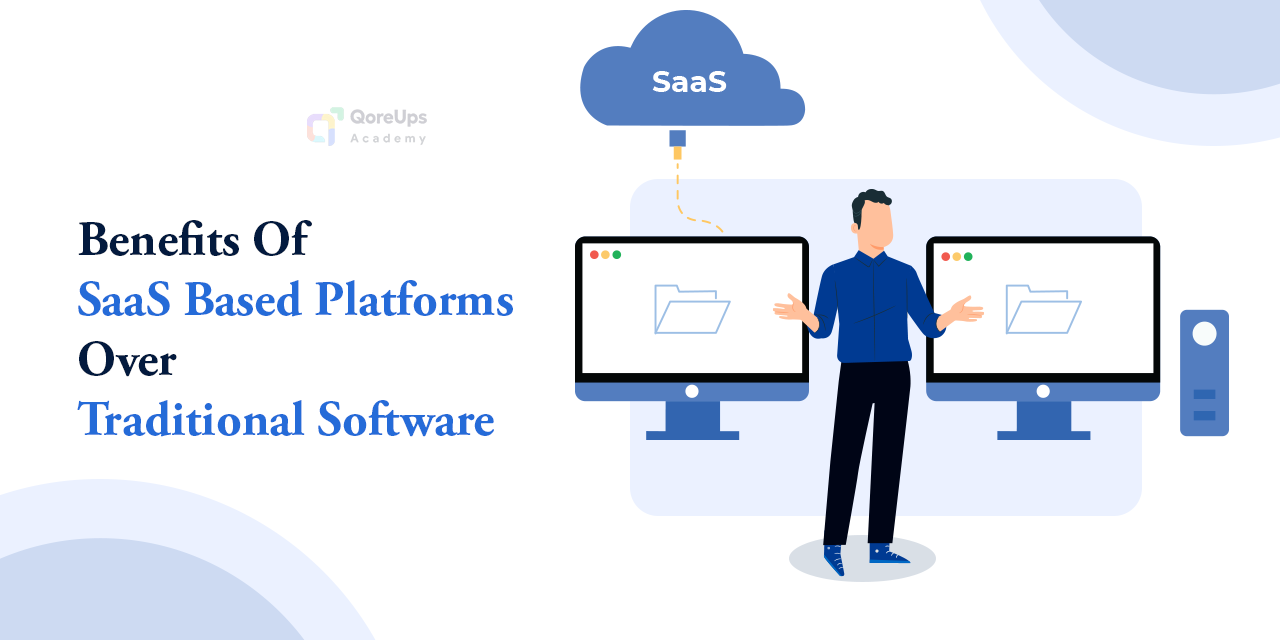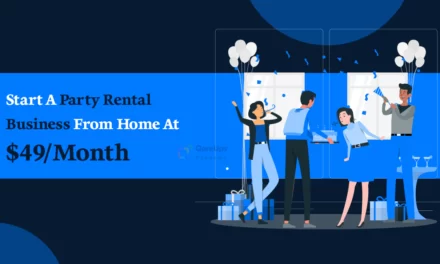In the evolving landscape of technology, the term “SaaS based platform” has gained significant traction.
SaaS platform represent a revolutionary shift in how software is delivered and consumed.
Unlike traditional software applications, SaaS platforms offer a plethora of advantages, making them an increasingly popular choice among businesses of all sizes.
This comprehensive guide delves into the intricacies of SaaS based platforms, exploring their features, benefits, and best practices for maximizing their potential.
Delivery Model
SaaS Based Platform
A SaaS based platform fundamentally changes the software delivery paradigm by providing applications over the Internet on a subscription basis.
Users can access the software via web browsers or APIs, eliminating the need for local installations.
This model offers unparalleled flexibility and accessibility, as users can access the platform from any device with an internet connection.
The subscription model often includes automatic updates, maintenance, and customer support.
This ensures that users always have access to the latest features without additional effort or cost.
Traditional Software Application
Conversely, traditional software applications follow the conventional model of local installation on individual devices or on-premises servers.
Users purchase licenses to install and run the software locally, requiring manual installation and configuration.
While this model offers control over the software environment, it demands significant effort in terms of installation, updates, and maintenance, which can be a cumbersome process for users and IT departments.
Deployment Strategies
SaaS Based Platform
SaaS platforms are centrally hosted on the provider’s servers and accessed over the Internet.
This centralization means the provider manages all infrastructure, ensuring high availability, reliability, and security.
The deployment process is seamless for the user, often requiring no more than logging into an account via a web browser.
This streamlined onboarding process accelerates the time-to-value, allowing businesses to start using the software almost immediately.
Traditional Software Application
Deployment of traditional software involves decentralized installation on local systems or on-premises servers.
This approach provides users with greater control but comes with the added responsibilities of system compatibility checks, manual installation, and ongoing maintenance.
Such decentralized deployment can be time-consuming and resource-intensive, often leading to higher operational costs and longer deployment times.
Maintenance and Updates
SaaS Based Platform
One of the standout features of SaaS platforms is that the provider handles all maintenance and updates.
Users benefit from automatic updates, with new features and patches deployed centrally.
This ensures that users always have access to the latest version of the software without any manual intervention.
The centralized maintenance model reduces downtime and ensures consistent performance across all user accounts.
Traditional Software Application
In the traditional software model, users are responsible for managing updates and maintenance.
This requires regularly checking for new releases, downloading updates, and applying patches manually.
This process can disrupt workflows and consume significant time and resources.
While it offers more control, it also imposes a heavier administrative burden on users, often leading to outdated software versions and potential security vulnerabilities.
Scalability
SaaS Based Platform
SaaS platforms are inherently scalable due to their cloud-based infrastructure.
Providers can dynamically allocate resources based on demand, ensuring optimal performance even during peak usage periods.
This scalability is a major advantage for growing businesses, as it allows them to seamlessly adjust their usage without the need for significant hardware investments.
SaaS platforms can easily accommodate an increasing number of users or higher workload demands, providing a flexible solution that grows with the business.
Traditional Software Application
Scaling traditional software applications can be challenging, especially those deployed on-premises.
Users may face limitations due to hardware constraints or licensing restrictions, often necessitating costly hardware upgrades or infrastructure expansions to meet growing needs.
This makes scalability a more complex and expensive endeavor compared to the flexibility offered by SaaS platforms.
Cost Structure
SaaS Based Platform
SaaS platforms typically use a subscription-based revenue model, where users pay recurring fees for access to the software and related services.
This model often includes tiered pricing based on usage levels, feature sets, or user roles, providing flexibility and scalability.
The predictable cost structure helps businesses manage their budgets more effectively, aligning expenses with usage patterns and eliminating the need for large upfront investments.
Traditional Software Application
Traditional software applications may employ various pricing models, such as one-time licenses, perpetual licenses, or usage-based pricing.
Users may incur significant upfront costs for software licenses, along with ongoing expenses for maintenance, updates, and support.
The total cost of ownership (TCO) can vary widely, influenced by factors like installation complexity, upgrade frequency, and support requirements, often making it harder to predict and manage long-term costs.
Implications for Users and Businesses
SaaS Based Platform
For businesses, SaaS platforms offer numerous advantages, including:
- Accessibility: Anytime, anywhere access via the internet enhances productivity and collaboration.
- Affordability: Lower upfront costs and predictable subscription fees improve budget management.
- Scalability: Seamless scalability supports business growth without the need for significant hardware investments.
- Maintenance: Automatic updates and maintenance reduce the administrative burden on IT departments.
- Collaboration: Enhanced collaboration and data-sharing capabilities foster better teamwork.
- Security: Providers implement robust security measures, often exceeding what businesses can achieve independently.
Traditional Software Application
While traditional software applications offer certain benefits, such as:
- Control: Increased ability to customize and configure software.
- Privacy: Enhanced data privacy and control over sensitive information are particularly important for certain industries.
- Offline Access: Ability to use the software without an internet connection, ensuring availability in all circumstances.
- Compliance: Tailored solutions to meet specific regulatory or compliance requirements.
- Legacy Systems: Support for legacy systems or environments that may not be compatible with cloud-based solutions.
Upon comparing the SaaS based platforms with traditional software applications, in some cases, SaaS overtakes traditional methods.
If you are eager to build Software that is scalable, cost and time-effective, then opting for SaaS based platform is the best choice.
Now let’s delve into how to implement a SaaS based platform for your business.
Best Practices for Implementing SaaS Based Platforms
Evaluate Business Needs:
Assess your business requirements to determine whether a B2B SaaS platform aligns with your strategic goals.
Consider factors like scalability, cost, accessibility, and the need for collaboration tools.
Choose the Right Provider:
Select a reputable SaaS provider with a proven track record.
Look for providers that offer robust security measures, reliable customer support, and regular updates.
Plan for Integration:
Ensure the SaaS platform can seamlessly integrate with your existing systems and workflows.
This may involve using APIs or third-party integration tools to facilitate data exchange and interoperability.
Prioritize Security:
Evaluate the security measures implemented by the SaaS provider.
Ensure they comply with industry standards and regulations to protect sensitive data and mitigate risks.
Train Your Team:
Invest in training to ensure your team is proficient in using the SaaS platform.
Effective training can enhance user adoption and maximize the platform’s potential benefits.
Monitor Usage and Performance:
Regularly monitor the platform’s usage and performance to identify any issues or areas for improvement.
Utilize analytics and reporting tools to gain insights into how the platform is being used.
Leverage Customer Support:
Take advantage of the customer support services offered by the SaaS provider.
Promptly address any issues or concerns to minimize disruptions and maintain optimal performance.
Stay Informed:
Keep abreast of new features, updates, and best practices related to the SaaS platform.
Continuous learning will help you leverage the latest innovations and stay competitive.
Future Trends in SaaS Based Platforms
Artificial Intelligence and Machine Learning:
Integration of AI and ML capabilities will enhance the functionality of SaaS platforms, providing advanced analytics, predictive insights, and automation features.
Enhanced Security Measures:
As cyber threats evolve, SaaS providers will implement more sophisticated security measures, including advanced encryption, multi-factor authentication, and continuous monitoring.
Increased Customization:
SaaS platforms will offer greater customization options, allowing businesses to tailor the software to their specific needs and preferences.
Expansion of Vertical SaaS:
Vertical SaaS solutions, designed for specific industries, will become more prevalent, offering specialized features and functionalities to meet unique industry requirements.
Hybrid SaaS Models:
Hybrid models that combine cloud-based and on-premises solutions will gain traction, providing businesses with the flexibility to choose the best deployment strategy for their needs.
Focus on User Experience:
Providers will prioritize user experience, enhancing interfaces, and usability to improve adoption rates and satisfaction among users.
What Makes a SaaS Company Successful?
The reason behind the SaaS company’s success is its innovative and convenient nature.
A successful SaaS company typically excels due to several key factors:
- Product-Market Fit: Understanding and catering to a specific market’s needs with a compelling solution is crucial. Successful SaaS companies often start with a clear problem they solve effectively.
- Scalable Business Model: SaaS companies benefit from recurring revenue models (subscriptions) that allow for predictable income and scalability as they acquire more customers.
- Customer-Centric Approach: Prioritizing customer success and satisfaction leads to lower churn rates and higher customer lifetime value. Regular feedback loops and quick responses to customer needs are common traits.
- Effective Marketing and Sales: Leveraging digital marketing channels, content marketing, and a well-defined sales process are critical to acquiring and retaining customers cost-effectively.
- Innovative Technology: Continuous innovation in product features, user experience, and technology infrastructure helps SaaS companies stay competitive and relevant in a fast-paced market.
- Strong Leadership and Team: A capable leadership team and skilled employees are essential for driving growth, maintaining company culture, and navigating challenges effectively.
- Financial Management: Sound financial planning, managing cash flow, and reinvesting profits into growth are vital for sustaining long-term success.
Some Popular SaaS Examples
- Salesforce: A leading CRM (Customer Relationship Management) platform.
- QMarket: A SaaS Marketplace builder helps businesses to create a marketplace.
- Zoom: Known for video conferencing and collaboration tools.
- Slack: Messaging app for teams and workplaces.
- HubSpot: Offers inbound marketing and sales software.
- Dropbox: Cloud storage and file synchronization service.
- Adobe Creative Cloud: Provides creative software for design, video editing, and more.
These companies have not only addressed specific market needs effectively but also demonstrated innovation, scalability, and strong customer relationships, which are key to their success.
In Conclusion,
SaaS based platforms represent a transformative shift in software delivery, offering numerous advantages over traditional software applications.
From accessibility and scalability to cost-effectiveness and automatic maintenance, SaaS platforms provide a compelling solution for modern businesses.
By understanding their features, benefits, and best practices, organizations can make informed decisions and leverage top SaaS platform to drive growth and innovation.
As technology continues to evolve, SaaS platforms will play an increasingly vital role in shaping the future of business operations.






